Sathyamangalam Wildlife Sanctuary is located within the Eastern Ghats of Tamil Nadu. It is a known haven for wildlife lovers and one of the biggest sanctuaries in South India, lying within the Nilgiri Biosphere Reserve. Rich biodiversity forms the basis of this sanctuary, which holds tigers, elephants, leopards, and many endemic bird species. In 2013, it was declared as a tiger reserve, making this sanctuary an essential component of India’s efforts in tiger conservation. Besides wildlife, the sanctuary offers landscapes with dense forests and grasslands. It is an excellent destination for those seeking wildlife adventure.
Location
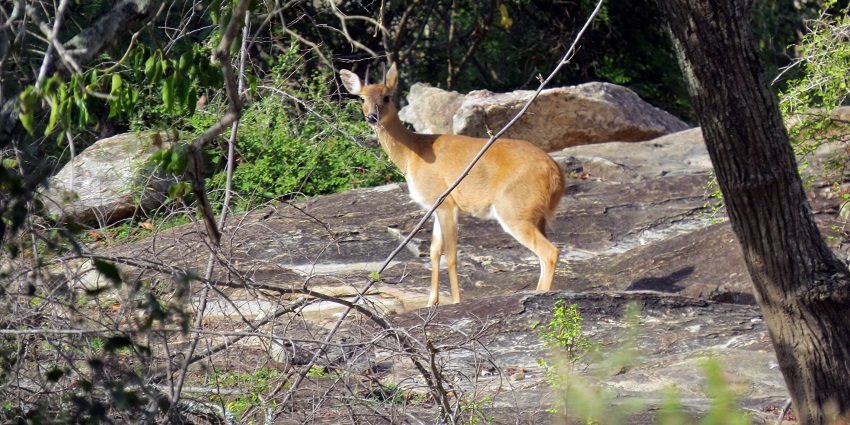
Photo: A. J. T. Johnsingh, WWF-India and NCF / Wikimedia Commons
The sanctuary is located in the Erode district of Tamil Nadu, on the border between Tamil Nadu and Karnataka. The sanctuary lies within the Nilgiri Biosphere Reserve, covering an area of approximately 1,411 square kilometres. The sanctuary’s proximity to the Western Ghats makes it a key region for biodiversity conservation and a favourite destination for nature enthusiasts.
Suggested Read: New Year Events In Chennai
How To Reach
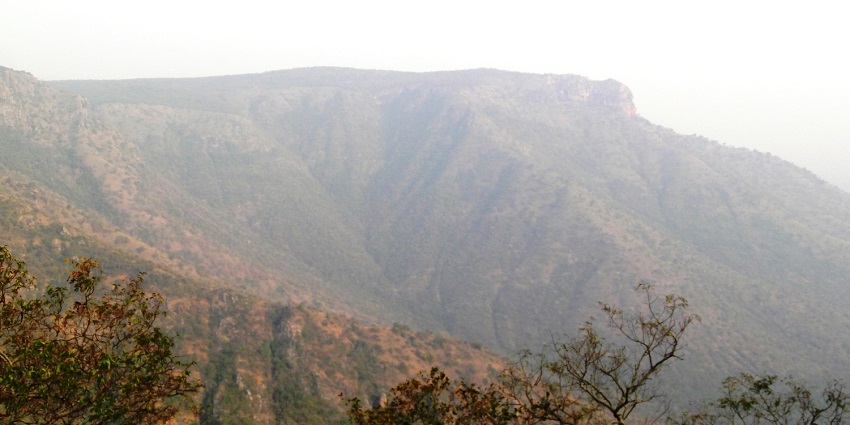
Photo: Jaseem Hamza / Wikimedia Commons
By Air: The nearest airport is Coimbatore International Airport, which is approximately 90 km from Sathyamangalam. Taxis and private vehicles can be hired to reach the sanctuary from the airport.
By Road: The sanctuary is well-connected by road. National Highway 948 passes through Sathyamangalam town, making it easily accessible by car or bus from major cities like Bangalore (190 km) and Coimbatore (90 km).
By Rail: Erode Junction, located about 70 km from Sathyamangalam, is the nearest major railway station. Buses and taxis are available to reach the sanctuary from Erode.
Places To Visit Around Sathyamangalam Wildlife Sanctuary
Here is a list of some places to visit in and around Sathyamangalam Wildlife Sanctuary:
1. Bhavani Sagar Dam
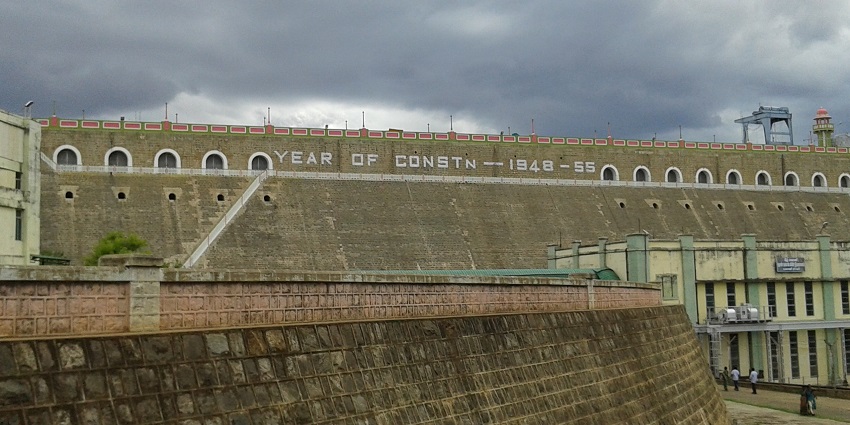
Photo: Srinath1996 / Wikimedia Commons
The Bhavani Sagar Dam, constructed over the Bhavani River, stands atop the list of the country’s largest earthen dams. Built near Sathyamangalam, it also provides a very popular picnic spot with its excellent panoramic views of forests and hills. The extensive reservoir aids in irrigation and, coupled with peaceful surroundings, brings lots of visitation to this location. The surrounding areas have a high abundance of flora and fauna, thus attracting bird watchers. There are also boat rides available on the water reservoir so that visitors can have a peaceful time while visiting the sanctuary.
Location: Bhavani Sagar, Erode District, Tamil Nadu
Timings: 9 AM to 6 PM
Entry Fee: Free
Suggested Read: Places To Visit In Mettupalayam
2. Bannari Amman Temple
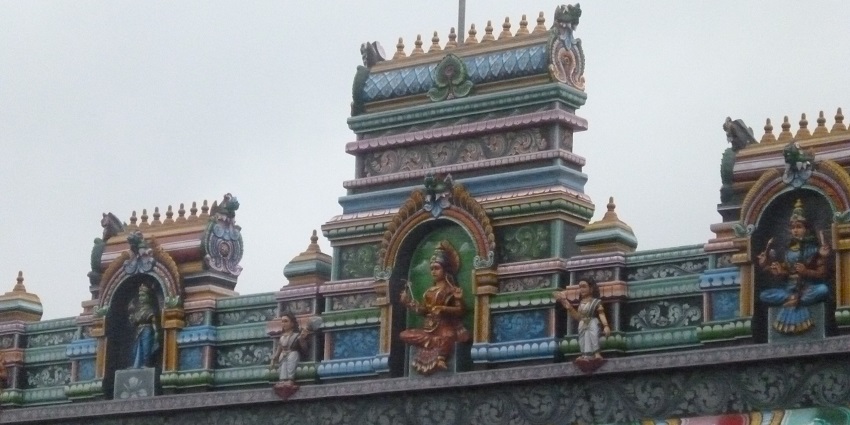
Photo: Saravananrajm / Wikimedia Commons
Bannari Amman Temple is one of the sacred Hindu temples constructed to worship Goddess Amman near the village of Sathyamangalam. Standing in an attractive backdrop of scenic beauty, this temple attracts the devotees and the tourists. Bannari Amman is considered to be a powerful deity; the temple has a deep culture-related significance in the locality. Thousands of devotees visit this holy temple every year as a part of its annual festival- Bannari Amman Thiruvizha. The foothills of the Western Ghats provide for a serene background both for spiritual and aesthetic appreciation at the temple.
Location: Bannari, near Sathyamangalam, Erode District, Tamil Nadu
Timings: 6 AM to 8 PM
Entry Fee: Free
3. Biligiriranga Hills

Photo: Vinayaraj / Wikimedia Commons
The Biligiriranga Hills, or BR Hills, are a range of lush, forested mountains located near Sathyamangalam. Rising to about 1,200 metres, the hills are home to a variety of wildlife, including elephants, tigers, and leopards, as well as endemic bird species. The hills are also a cultural hotspot, inhabited by the indigenous Soliga tribe. Trekking through BR Hills offers panoramic views of the surrounding valleys and forests, making it a perfect destination for adventure seekers and nature lovers. The serene environment also provides a peaceful escape for spiritual exploration and cultural immersion.
Location: Chamarajanagar District, Karnataka
Timings: 6 AM to 6 PM
Entry Fee: ₹250 for Indian nationals, ₹500 for foreign nationals
Suggested Read: Jyeshta Devi Temples In Kanchipuram For A Spiritual Experience
4. Gopalaswamy Betta
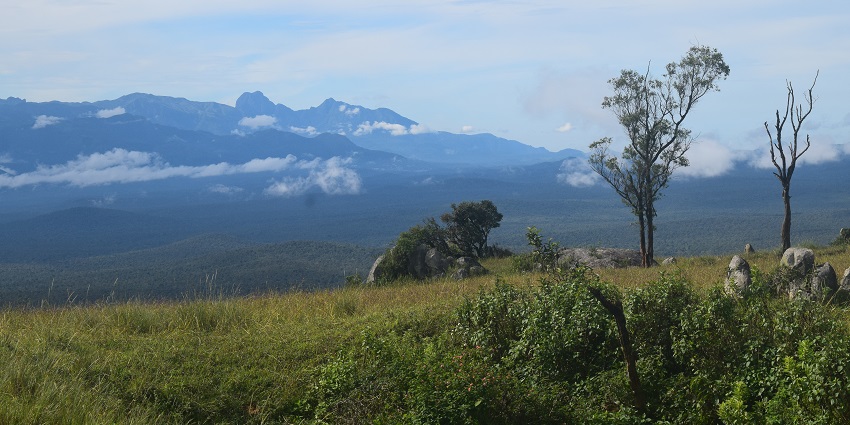
Photo: Shashidhara halady / Wikimedia Commons
Gopalaswamy Betta is a hilltop renowned for its scenic beauty and spiritual importance at Bandipur National Park. The hilltop hosts the ancient Gopalaswamy Temple, which is a shrine for Lord Krishna. People go here for pilgrimage and trekking. Gopalaswamy Betta is situated on an elevation of around 1,450 metres above and renders picture-perfect views of the surrounding forest and hills. This place is often visited by elephants, so it is one of the most visited places by wildlife photographers. Cool mist climate, along with such a quiet surrounding, makes it one of the must-visit places around Sathyamangalam.
Location: Gundlupet, Chamarajanagar District, Karnataka
Timings: 6 AM to 5 PM
Entry Fee: ₹50 per person (entry to temple); vehicle entry is ₹50
Where To Stay

Photo: Pixabay / Pexels / Image For Representation Only
There are a variety of accommodation options near Sathyamangalam Wildlife Sanctuary, including eco-lodges, guest houses, and resorts. Some popular choices include Dhole’s Den near Bandipur, offering luxury stays with wildlife experiences, and Hotel Radisson Blu in Coimbatore for those preferring a city-based stay. For a more budget-friendly experience, homestays and local guest houses in Sathyamangalam and Erode are ideal options.
Suggested Read: Thanthai Periyar Wildlife Sanctuary
Where To Eat

Photo: sarthak / Pexels / Image For Representation Only
Local eateries in Sathyamangalam offer traditional South Indian cuisine, including dosas, idlis, and filter coffee. Annapurna Hotel in Sathyamangalam is known for its simple but delicious meals. For a wider variety of dishes, Hari Bhavanam in Coimbatore offers a mix of vegetarian and non-vegetarian food. Travellers can also stop at roadside dhabas and small restaurants near the sanctuary for authentic Tamil food.
Best Time To Visit
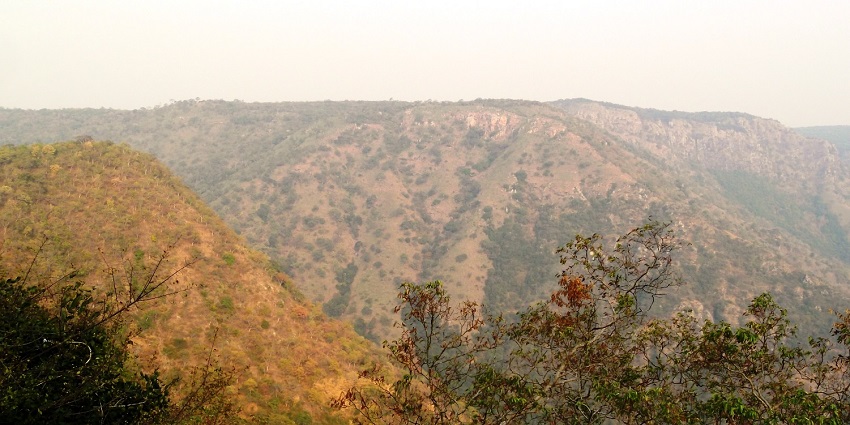
Photo: Jaseem Hamza / Wikimedia Commons
The best time to visit Sathyamangalam Wildlife Sanctuary is between October and March, when the weather is cool and conducive for wildlife sightings and trekking. During this period, the temperature ranges from 15°C to 25°C, making it comfortable for outdoor activities. The post-monsoon season also ensures lush greenery, enhancing the beauty of the sanctuary. Avoid visiting during the summer months (April to June) as temperatures can rise above 35°C.
Suggested Read: Places To Visit In Rameshwaram For An Unforgettable Journey
Other Factors To Consider

Photo: Oleksandr P / Pexels / Image For Representation Only
There are some other factors that you should keep in mind while visiting the sanctuary.
Average Cost Of Trip:
The trip cost to Sathyamangalam Wildlife Sanctuary, including accommodation, meals, and transportation, the average cost would range from 5,000 to 8,000 INR for a two-day stay. Budget travellers can stay in guest houses or homestays, dine at local eateries, and opt for public transport. For a more luxurious experience, the cost may rise to 10,000 INR or more for the same duration, especially if opting for high-end accommodations or guided wildlife tours. Foreign tourists should also consider higher expenses due to transportation and additional entry fees.
Tips For Travellers:
- Wear Comfortable Clothing: The region is warm, so light, breathable clothing is recommended.
- Carry Binoculars: Essential for spotting wildlife and birds from a distance.
- Plan Your Visit Early In The Morning: Wildlife is more active during the cooler parts of the day.
- Hire A Local Guide: To enhance your understanding of the sanctuary’s biodiversity and for safer navigation.
Sathyamangalam Wildlife Sanctuary offers an unparalleled opportunity to experience the wild beauty of Tamil Nadu’s Eastern Ghats. With its vast array of flora and fauna, trekking paths, and nearby cultural attractions, it’s a destination that appeals to both nature enthusiasts and wildlife lovers. Ready to embark on a memorable adventure? Book your Sathyamangalam Wildlife Sanctuary tour with TripXL today and immerse yourself in the vibrant wildlife and breathtaking landscapes of this incredible sanctuary.
Cover Photo: Jaseem Hamza / Wikimedia Commons


 WhatsApp
WhatsApp
 Twitter
Twitter









